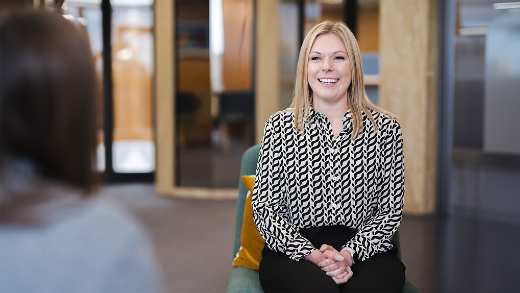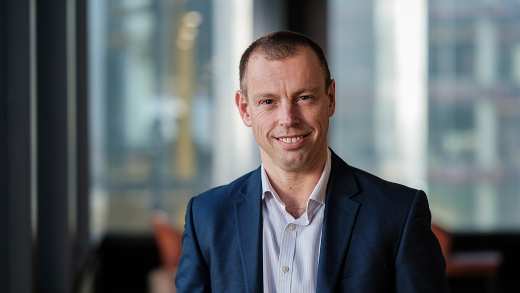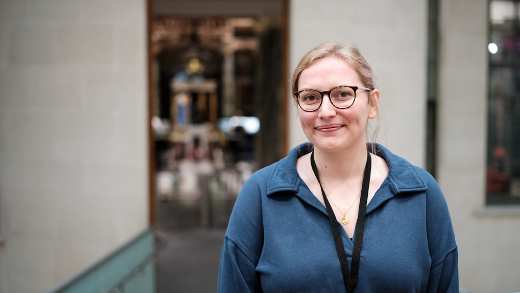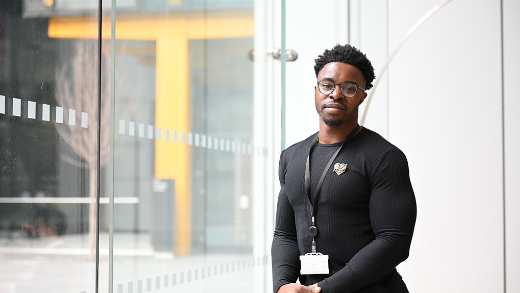Brian Grellmann, senior user experience researcher, on making people cry in the pursuit of creating beautiful things that work for everyone.
Brian Grellmann, senior user experience researcher, on making people cry in the pursuit of creating beautiful things that work for everyone.
I grew up in Canada. My mom is Japanese, and my dad is Swiss. I travel a lot to Japan and Switzerland - in some ways they feel like home, in others they reject me.
Christmas isn't big in Japan, so we never really celebrated it. Now I try to go to Switzerland for Christmas because there's the Christmas markets and lots to do. Mom cooked for us growing up so I was raised on Japanese food; I still cook and eat Japanese as much as I can.
From a young age, I’ve had to appreciate people’s differences and that's always been interesting to me. I'm still trying to figure out where my own identity lies, especially living in England for 10 years now and not exactly feeling British either.
On becoming a mole
I studied human-computer interaction design at City University of London with a focus on inclusive design and accessibility. Human-computer interaction is a mix of computer science and psychology.
When computers first came about, they were a specialist tool for experts. As they became more popular and started appearing in people’s homes, they needed to become more usable for all. That’s when human-factors engineering, cognitive science, and other disciplines began to help make sure computers work for everyone, not just computer scientists.
My dissertation was in partnership with the World Wide Web Consortium (W3C), the organization that created guidelines for web accessibility. They wanted to know if their guidelines worked for people with aphasia, a speech and language impairment that can follow a stroke or brain injury.
I stayed on at the university as a research assistant. Then, around three years ago, I became a mole in the private sector – joining Aviva full time, but remaining part of a university advisory committee.
On only saying yes and no
Recently, I organised a workshop for the Aviva design team with some of my university professors - to help understand how Aviva’s websites can work better for people with aphasia.
We invited a panel of four people with aphasia. First, to share their experience of aphasia and using websites. And then to take part in usability testing, where we asked them to use our websites to perform certain tasks and observed what worked for them and what didn’t.
Aphasia can affect language, reading, writing, listening, comprehension. Your intelligence is still intact, but you might not be able to communicate what you want to communicate.
One person who took part was only able to say yes or no. We communicated with pen and paper, and card sorting, which is using index cards with words on to help us reach a shared understanding of things that are important and things that are less important.
It may not have been textbook-perfect research. It was adapted so that people who previously could not participate in research could now participate, and we could start to collect insight into what works for them. There's a lot of work still to be done to make research more inclusive.
On being temporarily not disabled
Whenever we do research with people who are disabled – and this goes for any disability – something always clicks for people observing.
You could have a webpage full of jargon or dense writing, which for some people might be fine. But if you put that same page in front of someone with a learning disability or cognitive impairment, you really see why guidelines exist around Plain English and shorter sentences.
Blind people use screen readers - software that reads out text and information from webpages. I've done user testing with blind people for airlines. Afterwards, some people from the airlines were in tears because they realized they’d created sites that excluded people from booking their own flights.
If you can design for the edges of experience, that same design works better for everybody. People who have English as a second language, who are time short, or in a vulnerable situation. It makes commercial sense, too. Disabled people’s households have a spending power of £274 billion a year.
The biggest misconception is that not many people have disabilities. In the UK, 14 million people have a disability. That's 20% of working-age adults and for pension-age adults it’s more like 45%. The truth is, at some point, every person is going to experience disability of some kind.
On good advice
Nothing about us without us. That’s something my professors instilled in me. It means you don't make decisions about how disabled people experience things without involving them. That could be by including them in the design process, employing them, or hiring them as consultants.
A colleague and I were invited to speak at an accessibility event, and we felt quite uncomfortable because there were no disabled people speaking. So, we invited a friend of ours, Adi, who is blind, to speak with us. We did a live usability test where Adi went through some websites using a screen reader.
People got a lot more from observing Adi and hearing him speak than they would ever have got from me. They were mesmerized by him. He's a very charismatic person anyway, but what he shared was just eye opening for a lot of people.
On utopia
I would love to live in a world where people are designing things that work for everybody. It's ingrained into the way we work, and nobody challenges it.
Along with our accessibility champions group at Aviva, I’m creating something I hope will help. It’s beautiful. The Aviva Accessibility Manual is a website that gives accessibility guidance for each person’s role. It showcases the work we’re doing here at Aviva, but anyone can use it.
My hope is that in every single meeting, everyone will discuss the impact of their decisions on disabled people, vulnerable people, and people - like me - from diverse backgrounds.
***
It takes our people to make Aviva a great place to work. For more on life at Aviva, follow us on LinkedIn, Instagram and Twitter.





















